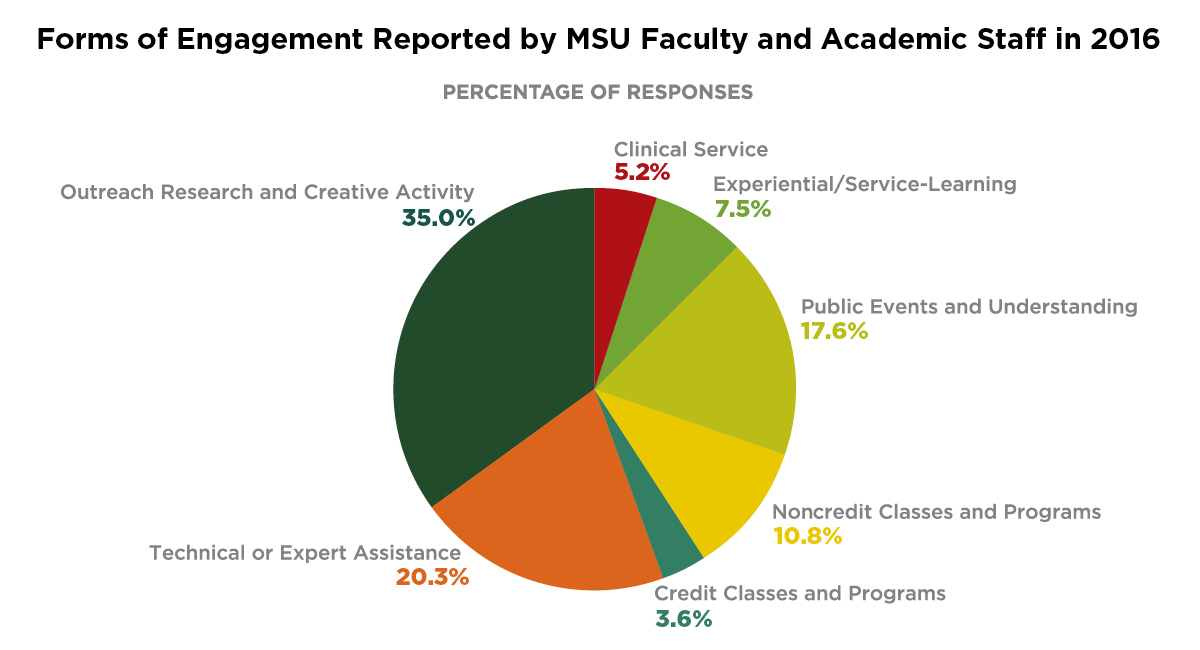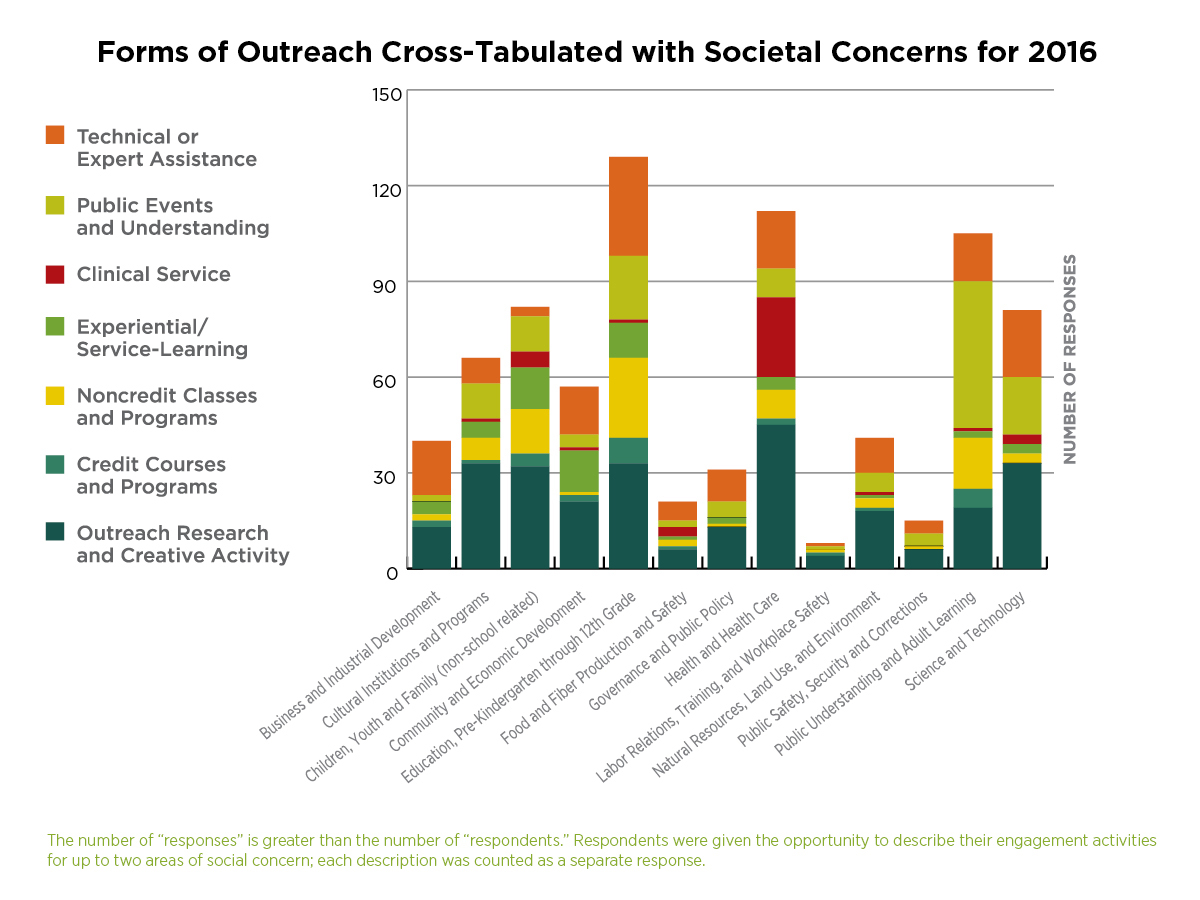Outreach and Engagement at Michigan State University, 2016
Sponsored by MSU's National Collaborative for the Study of University Engagement (NCSUE)External link - opens in new window, the Outreach and Engagement Measurement Instrument (OEMI) gathers data about the outreach activities of MSU faculty and academic staff. The information is self-reported and participation in the annual survey is voluntary. Data for 2016 were collected between January and April 2017 and represent the 13th year of data collection; 884 faculty and academic staff responded to the survey. Since 2004, 4,170 distinct (non-duplicative) respondents have reported their outreach and engagement through the OEMI. For this snapshot, OEMI data are augmented with data from the service-learning and civic engagement student registration system.
OEMI results for 2016 include the following:
$14,852,293
Value of salary investment by MSU faculty and academic staff in addressing issues of public concern (data from those reporting outreach activities on the OEMI)
95.0%
Respondents whose outreach contributed to achieving Boldness by Design (BBD) imperatives:
71.0% = Enhanced the student experience
79.2% = Enriched community, economic, and family life
41.2% = Expanded international reach
59.2% = Increased research opportunities
49.6% = Strengthened stewardship
69.1% = Advanced our culture of high performance
619
Number of specific projects/activities reported
Of the respondents who described specific projects/activities:
79.1% = Reported working with external partners
61.1% = Reported having created intellectual property and scholarly outcomes
55.1% = Reported that their outreach work impacted their scholarly or teaching practices
32,223
Number of students who participated in community-engaged learning and/or community service during the 2016-2017 academic year. Of those students, 35% (11,137) were registered in community engaged learning as part of an academic course or program and 65% (21,086) participated in co-curricular community service.
* The number of "responses" is greater than the number of "respondents." Respondents were given the opportunity to describe their engagement activities for up to two areas of social concern; each description was counted as a separate response.



* The number of "responses" is greater than the number of "respondents." Respondents were given the opportunity to describe their engagement activities for up to two areas of social concern; each description was counted as a separate response.